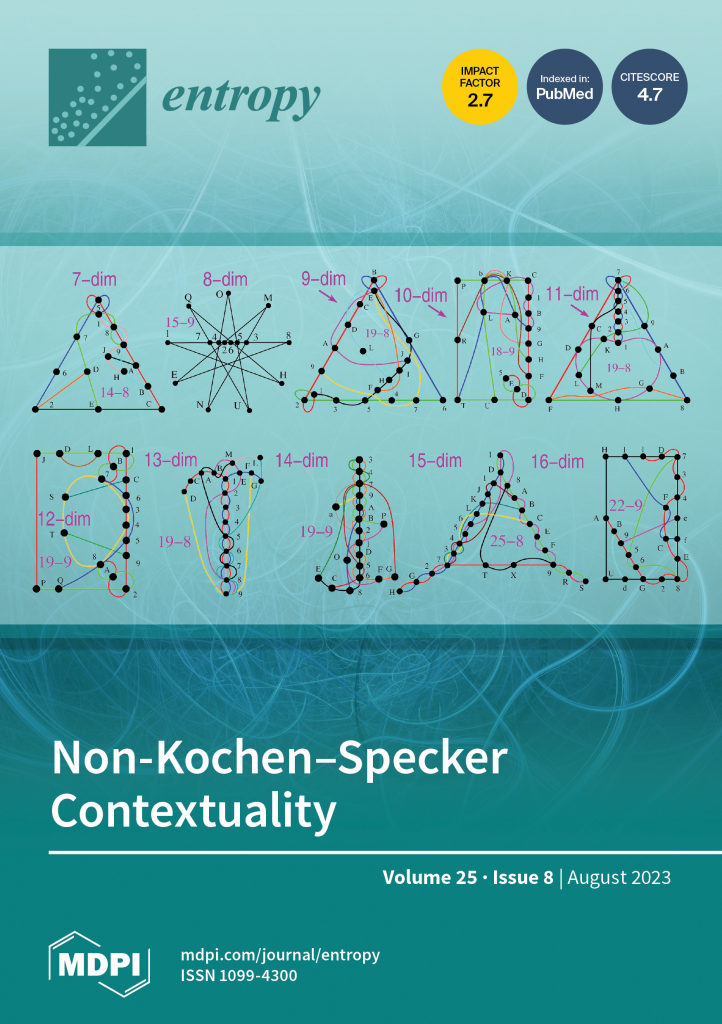Invited paper “Non-Kochen–Specker Contextuality” by Mladen Pavičić, Entropy, 25(8), 1117 (2023), DOI: 10.3390/e25081117, has been selected as the cover paper of issue 8 of Entropy Volume 25 (2023) and the publication charges were waived.
The cover story reads as follows.
Let us consider a triangular hypergraph with three vertices and three hyperedges, each pairwise connecting two of the vertices. If we tried to assign 0 and 1 to vertices, so that just one vertex within each of the three hyperedges is assigned 1 (condition X), we would realize that this is not possible. The hypergraph exhibits a non-Kochen–Specker (KS) contextuality. Why “non-“? Because a KS hypergraph violates the same condition X, however in a space of dimension n ≥ 3 in which all of its hyperedges must contain n vertices. In an n-dim non-KS hypergraph at least one hyperedge has less than n vertices.
If we represented vertices by vectors in a hypergraph, n mutually orthogonal vectors in each hyperedge would be indispensable for an experimental implementation of the hypergraph, KS or not. But although all of them are needed for an implementation, we can choose some smaller set of the vertices when considering contextuality for an application, say, for quantum computation or quantum communication. If the hypergraph with chosen reduced number of vertices violated the aforementioned condition X, it would be a non-KS hypergraph.
How to generate non-KS hypergraphs? A previous method of obtaining them was of exponential complexity and their generation in dimensions higher than eight faced a computational barrier. Therefore, in this paper, we make use of dimensional upscaling which does not scale with dimension. This enables us to generate non-KS hypergraphs in well over 32-dimensional Hilbert spaces. In the paper we give explicit examples for all spaces up to 16-dim ones and show that the minimal number of hyperedges fluctuates between eight (odd dimensions) and nine (even dimensions) under the requirement that at least one the hyperedges contains n vertices, all of which share at least two hyperedges.

